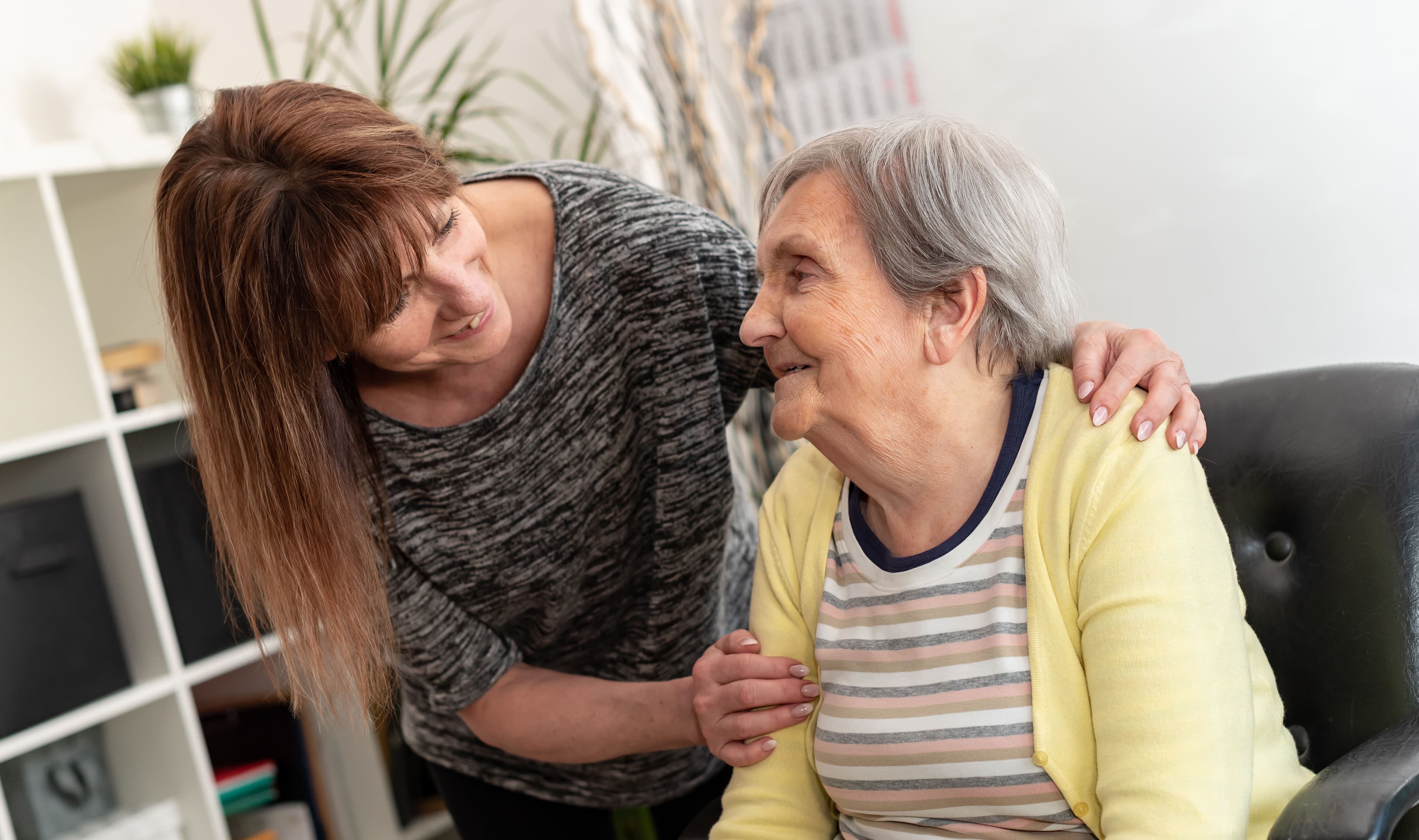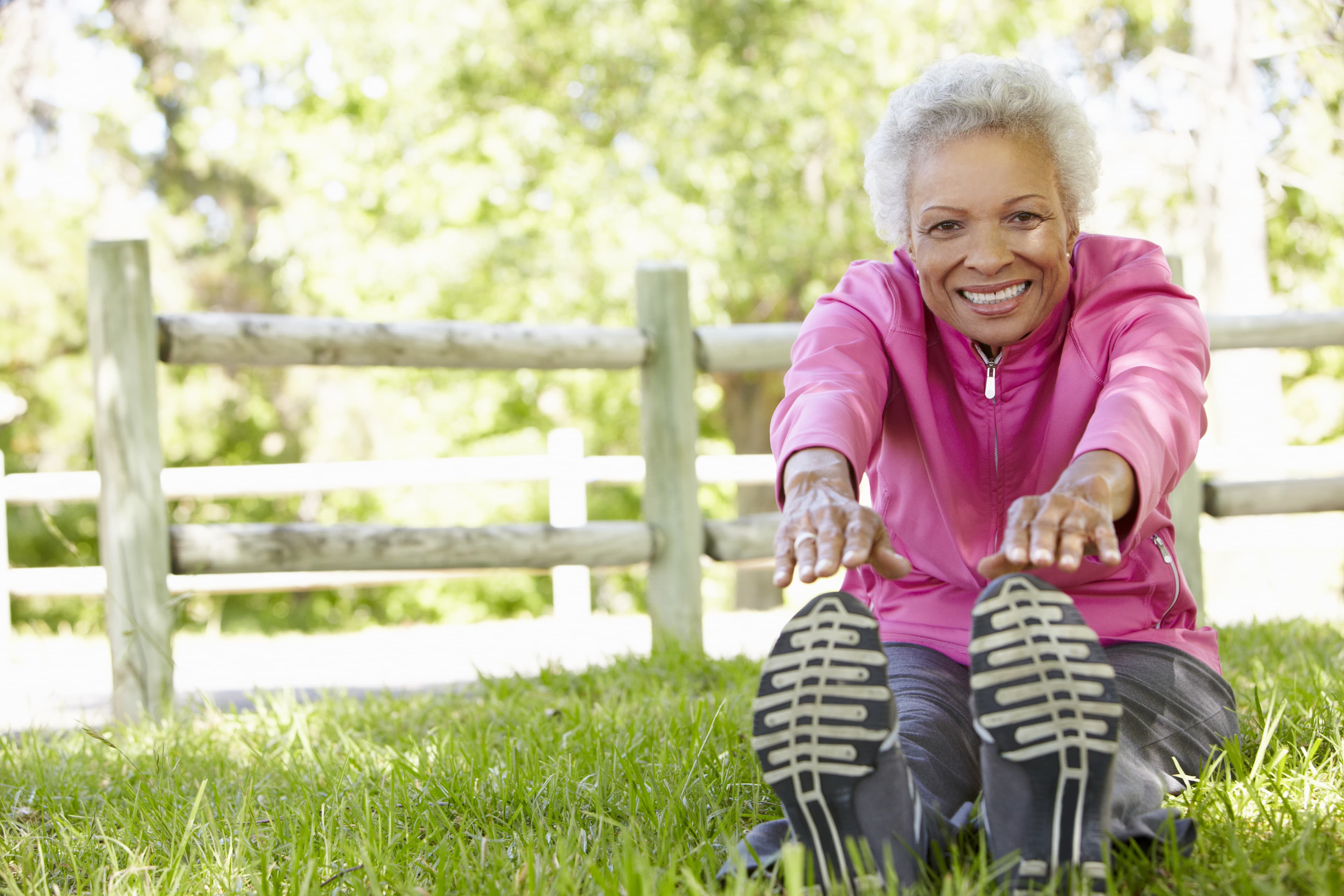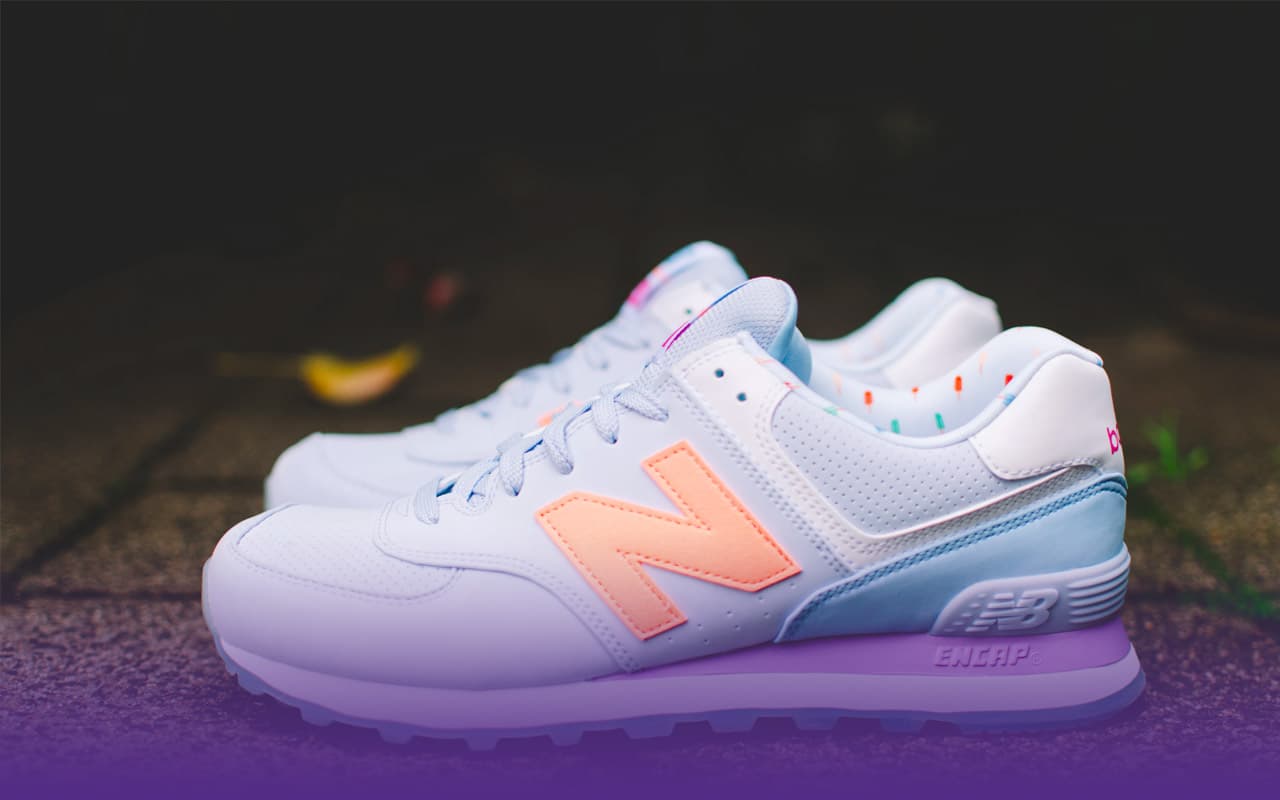Everyone experiences aches and pains occasionally, but for people aged 65 and older, it’s a common and often chronic problem. One study, published in Reviews in Pain, found that between 73-80% of older adults deal with pain regularly.
There’s no way to prevent pain altogether, but there are things you can do to reduce inflammation, encourage mobility, and improve your quality of life. Below, we discuss the causes of pain and provide some at-home tips for relief.
Why are older adults more likely to experience pain?
As you age, your body undergoes general wear and tear, causing your musculoskeletal structure to become more fragile.
“Think of it like a car with a lot of miles,” said Mercedes Fernandez, a holistic health coach, and geriatric kinesiologist. “Over time, more tune-ups are needed to keep the car primed and going. When it comes to aging bodies, the accumulation of injury, disease, and ailments begin to add up.”
What are some common causes of pain in older adults?
Your body undergoes various changes as you age, but the most common cause of pain in seniors is arthritis.
“Arthritis is the inflammation of a joint that can cause pain and stiffness over time,” Fernandez said. “Anytime the body experiences inflammation, the immune system works to protect the area and bring it back down to baseline. However, when inflammation becomes chronic, symptoms worsen.”
Fernandez continued, “in other cases, arthritis occurs due to worn-down cartilage in major joints (osteoarthritis). Cartilage acts as a natural soft barrier. Without it, your bones rub together, resulting in excruciating pain.”
Other medical conditions known to cause acute and chronic pain in older adults include:
Heart disease
Osteoporosis
Menopause
Low testosterone
Cancer
Diabetes
Neuropathy (nerve damage)
Progressive neurological diseases, like Parkinson’s and amyotrophic lateral sclerosis (ALS)
If you experience acute or chronic pain, and it affects your ability to spend time with friends or do other activities you enjoy, it’s crucial to take action.
If I suffer from acute or chronic pain, should I stop exercising and/or avoid other activities?
If you suffer from acute or chronic pain, you might be tempted to take it easy and get lots of rest, but that isn’t the best approach.
“Always remember that some movement is more beneficial than none,” Fernandez said. “When we stop moving because of pain, we stop the natural homeostasis of the body.
In order for healing and health to occur, we need good circulation to regenerate blood cells and oxygenate our entire body and brain. When people stop moving, more pain arises because the body is stagnant and not circulating new blood.”
Even so, you shouldn’t ignore pain entirely.
“The caveat is knowing when too much movement is detrimental,” said Fernandez. “The only exception to stopping exercise or doing activities is when the movement itself is causing sharp pain. The human body is intelligent, it knows when it's gone too far. Learning to discern when the pain is uncomfortable versus harmful is key.”
So, it’s okay to keep exercising?
Yes, absolutely!
“The best thing seniors can do to avoid pain and immobility is to keep moving,” Fernandez said. “Starting a movement routine is essential and it can be something as simple as a brisk walk or gardening. The biggest misconception about fitness is that it has to be rigorous and heavy lifting. This isn’t true! Heavy and fast movement is counterintuitive for the older adult population.”
What are some safe activities that can help ease pain at home?
There are several exercises and activities that can help reduce pain at home, including:
Walking
Walking is low-impact and easy on your joints. “It’s a no-cost, non-medical activity that most people can do with rest breaks,” Fernandez said. “It’s also the most commonly recognized and accepted aerobic activity among older adults.”
Walking is especially personal to Fernandez –– she founded Walk With Pop in an effort to help older adults stay active. The program partners seniors with vetted and trained companions to walk and talk together.
Low-impact strength training
You don’t have to be a bodybuilder to benefit from lifting weights.
“Low-impact strength training helps build strong muscles,” said Fernandez. “And strong muscles help protect your joints. Plus, when your joints are protected, you’re less likely to experience inflammation.”
Water therapy
If you have a swimming pool, jacuzzi, or a walk-in tub, you might benefit from water therapy.
“The lightweight anti-gravity effect of water does wonders for the body,” Fernandez said. “If a heated pool is available and accessible, even better. The warmth of the pool will reduce inflammation. If you don’t have a pool, try a bath for temporary relief.”
Since water takes the pressure off the joints, you’ll notice a significant improvement in your range of motion, making it easier to stay active.
Stretching
To complement the benefits of exercise, Fernandez recommends establishing a stretching routine.
“Stretching isn’t widely talked about, but it is a critical factor in reducing pain,” Fernandez said. “Most pain stems from overly tight muscles, which can be curbed by stretching regularly.”
Is there anything else I should know about at-home pain management?
Staying physically active is an excellent way to reduce the frequency of aches and pains, but it isn’t the only solution. Here are several other considerations to make:
Assess your environment
Take the time to evaluate your home, including the bedroom, bathroom, and kitchen. Don’t forget to assess your furniture, clothing, and shoes, as well.
“Observe what may be contributing to your pain, Fernandez said. “An example may be the overused sofa you sit on every day or the worn-out shoes you love. Although these items may bring you comfort, sometimes they’re also the cause of your pain.”
“Likewise, if a surface is too soft, it could be making getting up much more difficult or putting your body in an awkward position that is unbeknownst causing the pain! Take inventory of your daily environment and routine and start there.”
Over-the-counter medication
Sometimes, healthy lifestyle changes and activity modifications don’t relieve pain. If you continue experiencing flare-ups, add a nonsteroidal anti-inflammatory drug (NSAID) to your first-aid kit. Acetaminophen (Tylenol) and low-dose aspirin are great places to start.
Ice and heat therapy
Alternating between a heating pad and an ice pack is another sure-fire way to achieve immediate pain relief. Heat encourages circulation, delivering oxygen and nutrients to the injured area of your body; while ice helps reduce swelling and pain.
Pain and the natural aging process
“Living with acute or chronic pain isn’t easy, but your body is resilient and resourceful,” Fernandez said.
“Pain is always an indicator that something’s not right, so do your best to become an investigator of your body, life, and daily routine. The answer always lies there. If at any point the pain becomes unbearable, seek professional medical help. There are many health professionals aside from medical doctors who can guide you and ease your pain.
Don’t be afraid to explore! You deserve to live a pain-free life while aging, and it is possible! At the end of the day, remember that any movement is better than none.”
A huge THANK YOU to geriatric kinesiologist, Mercedes Fernandez, for taking the time to answer our questions. For additional tips on healthy aging, visit her website: hellomercedes.co.




